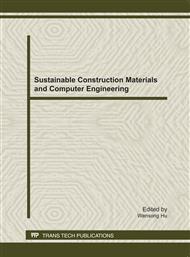[1]
Yang Kaihua, Yan Qingdong, Zheng Muqiao, Computational Aided Calculation of Hydraulic Torque Converter Original Characteristic, " Proceeding of the Fifth International Conference on Fluid Power Transmission and Control(ICFP, 2001), 2001. 4 : 533-536.
Google Scholar
[2]
Seunghan Yang et al, A Computer-Integrated Design Strategy for Torque Converters using Virtual Modeling and Computational Flow Analysis, , SAE Paper1999-01-1046.
Google Scholar
[3]
Chan-Sol Ahn, Kwang-Yong Kim, Aerodynamic Design Optimization of an Axial Flow Compressor Rotor, ASME GT-2002-30445, (2002).
Google Scholar
[4]
T. Shieh, C. Perng, D. Chu, S. Makim, Torque Conver Analytical Program for Blade Design Process, SAE Paper 2000-01-1145.
DOI: 10.4271/2000-01-1145
Google Scholar
[5]
Liu Wenqing. Design of Experiment. Beijing: Tsinghua University Press, 2005. (in Chinese).
Google Scholar
[6]
Yan Qingdong, Wei Wei, Multi-object genetic algorithm research on cascade system design of torque converter, / SIGHTNA Software Technique Annual Symposium, Beijing, 2005, 11. (in Chinese).
Google Scholar
[7]
Li Junfeng, Wen Shilie, Song Huafen, Blade forming of gas turbine using cubic spline fit method , Ship Engineering, 1996, 3: 32-35. (in Chinese).
Google Scholar
[8]
Yan Qingdong, Wei Wei, Research on variable width torus design method of torque converter , Construction Machinery and Equipment, 2006, 37(1): 47-49. (in Chinese).
Google Scholar
[9]
Helmut Gander, Josef Loibl, Michael Ulm, Gearbox-Integrated Mechatronic Control: A New Approach to Handle Powertrain Complexity, SAE Paper 1999-01-1055.
DOI: 10.4271/1999-01-1055
Google Scholar
[10]
Lai Yuyang, The algorithm study and system implementation of the hybrid optimization approach for blade aerodynamic design [D], Beijing: Tsinghua University, 2002 (in Chinese).
Google Scholar
[11]
Li Haipeng, Lai Yuyang, Cascade system optimization by integrating GAMBIT and Fluent on iSIGHT plarform, / SIGHTHA software technique annual symposium, Beijing, 2004, 11. (in Chinese).
Google Scholar


